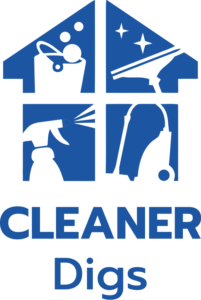House cleaning projects can feel overwhelming, especially when juggling a busy schedule and multiple responsibilities. However, breaking down tasks into manageable steps can inspire you to tackle your home’s cleanliness with confidence and ease.
In this article, we will explore various house cleaning projects and provide practical tips to keep your space organized and tidy.
Some of these house cleaning projects are quick fixes, while others may require a little more time and effort. Regardless of the task’s complexity, you will find that a clean and uncluttered environment can significantly improve your mood and daily routine.
By implementing consistent cleaning habits and planning ahead, you can save time, energy, and decrease stress levels.
As you continue reading, we will discuss the best strategies and techniques for setting up your house cleaning project plan, essential tools to have on hand, and how to efficiently tackle specific areas of your home, such as the kitchen, bathroom, and bedrooms. With these actionable tips and expert guidance, you’ll be on your way to designing and maintaining a comfortable, organized living space.
Essential Supplies for House Cleaning
House cleaning projects can be simple and efficient when you have the right supplies at your disposal. This section will highlight the essential cleaning agents and tools or equipment that you need for various tasks.
Cleaning Agents
There are several cleaning agents to choose from for your house cleaning tasks. The following table lists some of the most commonly used cleaning agents, their purposes, and suggested usage:
| Cleaning Agent | Purpose | Suggested Use |
|---|---|---|
| All-purpose cleaner | For most surfaces and general cleaning tasks | Kitchens, bathrooms, floors, and countertops |
| Glass cleaner | Streak-free cleaning of glass surfaces | Windows, mirrors, and glass objects |
| Disinfectant | Eliminate bacteria and germs on surfaces | Door handles, light switches, and toilets |
Notice that italic and bold formatting is used in the table to help distinguish each type of cleaning agent.
In addition to these, you should also consider using specialized cleaning agents for specific surfaces like wood, tile, or stainless steel. Keep in mind that it’s always a good idea to read labels and guidelines for each cleaning product to ensure proper usage, and choose options with eco-friendly ingredients whenever you can.
Tools and Equipment
Having the right tools and equipment can make all the difference in the effectiveness and speed of your house cleaning projects. Here’s a list of essential items for your cleaning arsenal:
- Microfiber cloths – versatile and reusable, these can be used for wiping and dusting surfaces.
- Sponge – an essential companion for various cleaning tasks, especially for scrubbing countertops or tiles.
- Mop – ideal for cleaning large floor surfaces, choose a machine-washable mop head for easy maintenance.
- Broom – for daily sweeping of floors and getting rid of dust, hair, and debris.
- Vacuum cleaner – essential for carpets, rugs, and getting to hard-to-reach spaces.
Remember to occasionally wash or replace these tools and equipment (as needed) to maintain their effectiveness in cleaning your home. By preparing and organizing these supplies, you’ll be well-equipped for tackling any house cleaning project that comes your way.
Room-Specific Cleaning Strategies
Kitchen Cleaning Projects
When it comes to kitchen cleaning projects, focus on areas that are frequently used and prone to accumulating grease and dirt. Start with the stovetop, oven, and microwave, using an appropriate cleaner to break down stubborn stains. Next, tackle countertops and cabinets with a gentle multi-surface cleaner. Don’t forget to clean out the refrigerator periodically, wiping down shelves and disposing of expired items. Lastly, routinely sweep and mop the floors to maintain a clean environment.
Bathroom Cleaning Projects
For bathroom cleaning projects, prioritize areas that can harbor germs and bacteria. Thoroughly clean the toilet, sink, and bathtub or shower with a bathroom-specific cleaner. Pay attention to tile grout, using a grout cleaner and brush to remove buildup. Replace or launder shower curtains regularly and don’t forget to wash bath mats. Maintain a clean and sanitary bathroom by routinely wiping down surfaces and cleaning mirrors with a glass cleaner.
Living Room Cleaning Projects
In the living room, keep surfaces dust-free by regularly wiping down surfaces such as shelves, tables, and electronics. Use a vacuum to clean carpets and area rugs. For hardwood or tile floors, sweep or mop as needed. Regularly dust window blinds and curtains and wash any removable cushion covers or throw blankets. To minimize allergens, keep pets groomed and avoid smoking indoors.
| Furniture Type | Cleaning Method |
|---|---|
| Upholstery | Vacuum, spot clean, or hire professional |
| Wood | Dust and polish with wood specific cleaner |
| Glass | Clean with a glass cleaner |
Bedroom Cleaning Projects
For bedroom cleaning, begin with making the bed and changing linens regularly. Maintain a clean and organized space by putting away clothing, decluttering, and dusting surfaces, including furniture and electronics. Vacuum or mop the floors, and don’t forget to clean under the bed. Be sure to also wash or replace pillows and mattress covers to minimize allergens and keep your sleeping area fresh.
Outdoor Cleaning Projects
Outdoor cleaning projects can improve your home’s curb appeal and overall appearance. Maintain a well-groomed lawn by regularly mowing, trimming hedges and bushes, and removing weeds. Clean outdoor furniture with a mild detergent and water. Sweep walkways and patios to remove dirt and debris, and pressure wash surfaces as needed. Don’t forget to clean out gutters, removing leaves and debris to prevent water damage and overflow.
Cleaning gutters yourself is a cheaper option. Don’t believe us? Check out the average cost of gutter cleaning in your area.
Keep your home’s exterior looking clean and well-maintained with these simple steps.
Deep Cleaning Techniques
Carpet Cleaning
To achieve a thorough carpet cleaning, follow these steps:
- Vacuum: Remove loose dirt and debris.
- Pre-treat: Apply a carpet cleaner solution to stains and high-traffic areas.
- Steam clean: Use a steam cleaner to deeply penetrate and lift dirt. Renting one or hiring a professional service is recommended for the best results.
- Dry: Allow carpets to dry completely before walking on them. Use fans and open windows to speed up the drying process.
Remember to test a small, hidden area with your chosen carpet cleaner solution before applying it to the entire carpet.
Upholstery Cleaning
Keep your upholstery looking fresh and clean with these techniques:
- Vacuum: Remove dust and dirt with the upholstery attachment on your vacuum.
- Spot clean: Remove stains with a cloth and appropriate cleaner. Check the manufacturer’s label for recommended cleaners and always test first on a hidden area.
- Deep clean: Rent a steam cleaner or hire a professional upholstery cleaning service for a thorough deep-clean.
| Upholstery Material | Recommended Cleaners |
|---|---|
| Fabric | Mild detergent or upholstery cleaner |
| Leather | Leather-specific cleaner + conditioner |
| Microfiber | Rubbing alcohol or water-based cleaner |
Window and Blind Cleaning
For sparkling windows and clean blinds, follow these tips:
Windows
- Wash: Mix a window cleaning solution with water, or use a store-bought cleaner. Apply to windows using a sponge or cloth.
- Squeegee: Swipe a squeegee from top to bottom to remove excess water and prevent streaks.
- Detail: Wipe any remaining water with a microfiber cloth or lint-free towel.
You can also clean windows with newspaper and leave no streaks.
Blinds
- Vinyl/Aluminum Blinds: Remove dust with a vacuum brush attachment or microfiber cloth. For a deeper clean, mix a solution of water and mild detergent. Wipe each slat with a cloth, then rinse with water. Allow blinds to air dry before closing.
- Wood/Faux Wood Blinds: Gently clean with a damp cloth and mild detergent. Avoid soaking, as excessive water can damage the finish. Dry each slat with a clean cloth.
Keep in mind that regular maintenance is essential for maintaining a clean and healthy living space.
Maintaining Cleanliness
Daily Cleaning Habits
Make your bed each morning to give your room a tidier appearance. Wipe down countertops in the kitchen and bathroom after each use to prevent the buildup of dirt and grime.
- Sweep high traffic areas in your home, such as the kitchen and entryway.
- Pick up clutter and put items back in their designated places. This helps keep your space organized and reduces stress.
Weekly Cleaning Checklist
Complete the following tasks once a week in order to maintain a clean and organized home:
- Dust surfaces using a microfiber cloth or duster to remove allergens and dust mites.
- Vacuum all carpeted areas and rugs to remove dirt and debris.
- Mop hardwood, tile, and laminate floors with a suitable cleaner.
- Clean bathrooms, including toilets, sinks, bathtubs, and mirrors.
- Wash and dry all laundry, including bedding and towels.
- Empty and clean all trash cans, recycling bins, and waste baskets.
Monthly Cleaning Tasks
Focus your attention on these activities at least once a month to keep your house clean:
- Clean appliances, such as refrigerators, ovens, and microwaves.
- Wipe down walls and baseboards to remove scuffs and stains.
- Vacuum and clean upholstery and curtains to remove dust and allergens.
- Flip and rotate mattresses to maintain their shape and comfort.
- Declutter closets, drawers, and cabinets to minimize excess belongings and maintain organization.
By consistently following daily, weekly, and monthly routines, you’ll be able to enjoy a clean and pleasant living space.
Frequently Asked Questions
What steps should one follow for an efficient house cleaning routine?
To create an efficient house cleaning routine, start by making a list of all the areas and items that need cleaning. Break tasks down into daily, weekly, and monthly chores. Prioritize tasks according to their level of importance or immediacy. Schedule a specific time each day for cleaning and stick to it. Begin with decluttering and organizing, followed by cleaning surfaces, floors, and any other areas that require attention. Lastly, dispose of trash and put away your cleaning supplies.
How can a cleaning project be effectively implemented in a school environment?
To implement a cleaning project in a school environment, you can begin by involving the school administration, teachers, staff, and students in the planning process. Assign roles and responsibilities to each group. Include educational components to increase awareness about the importance of cleanliness and hygiene. Schedule regular cleaning sessions and ensure that adequate cleaning supplies and equipment are available. Monitor progress and provide feedback, making adjustments to the plan as needed.
What are the essential items on a professional house cleaner’s checklist?
A professional house cleaner’s checklist should include the following items: microfiber cloths, a bucket, mop, broom, vacuum cleaner, all-purpose cleaner, glass cleaner, bathroom cleaner, rubber gloves, disinfectant wipes, scrub brushes, sponges, furniture polish, dusters, and a dustpan with brush. Additional items may be required for specific tasks or surfaces.
What strategies can help make the process of cleaning a house more enjoyable?
To make the process of cleaning more enjoyable, consider the following strategies:
- Listen to upbeat music, podcasts, or audiobooks while cleaning.
- Set small, achievable goals, and reward yourself after completing each task.
- Invite friends or family members to help, making the process more enjoyable and social.
- Break tasks into smaller increments, focusing on one room or area at a time.
- Experiment with different cleaning products and tools to find what works best for you.
How often should different areas of the house be cleaned to maintain hygiene?
To maintain hygiene, clean and disinfect high-touch surfaces daily, including doorknobs, light switches, countertops, and faucets. Bedrooms and living areas should be dusted and vacuumed at least once a week. Bathrooms require more attention, with toilets, sinks, and showers needing weekly cleanings. The kitchen should be cleaned daily, with a thorough deep clean at least once a week. Floors should be swept or vacuumed regularly and mopped depending on the level of foot traffic and type of flooring. Adjust the frequency of cleaning based on your household’s needs.
What should be considered when drafting a proposal for a cleaning project?
When drafting a cleaning project proposal, consider the following aspects:
- Clearly define the project’s objectives, scope, and goals.
- Outline the tasks to be performed, frequency, and the responsible parties.
- Estimate the time required to complete each task and indicate deadlines.
- Establish the necessary equipment, supplies, and resources required.
- Include a detailed budget breakdown, outlining costs for labor, materials, and any permits or licenses.
- Address potential challenges and propose solutions.
- Indicate the expected benefits and outcomes of the project.
- Gather support from stakeholders and secure necessary approvals or permissions.



